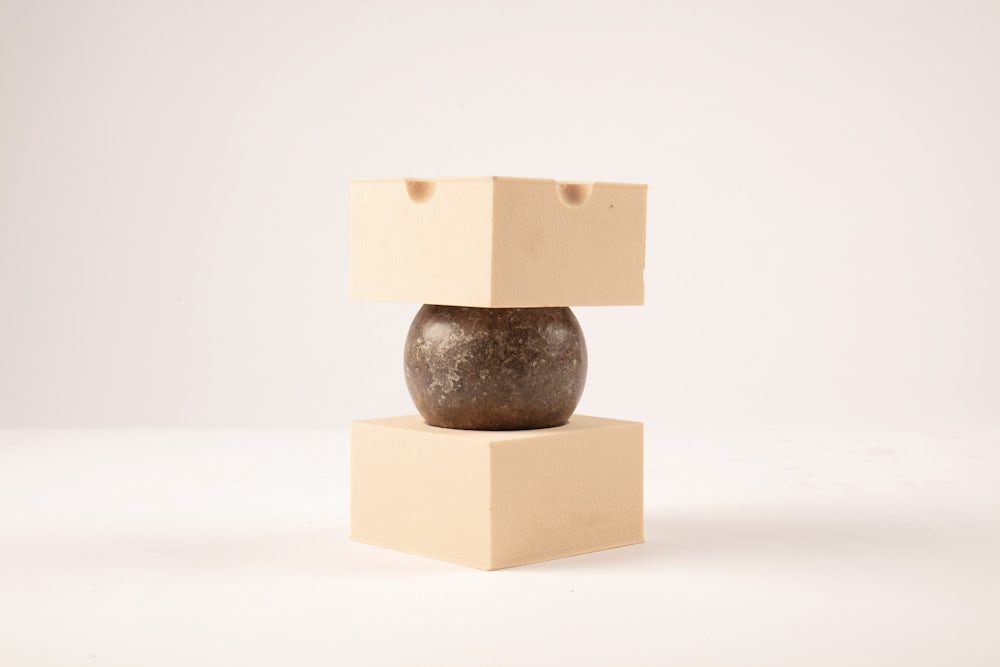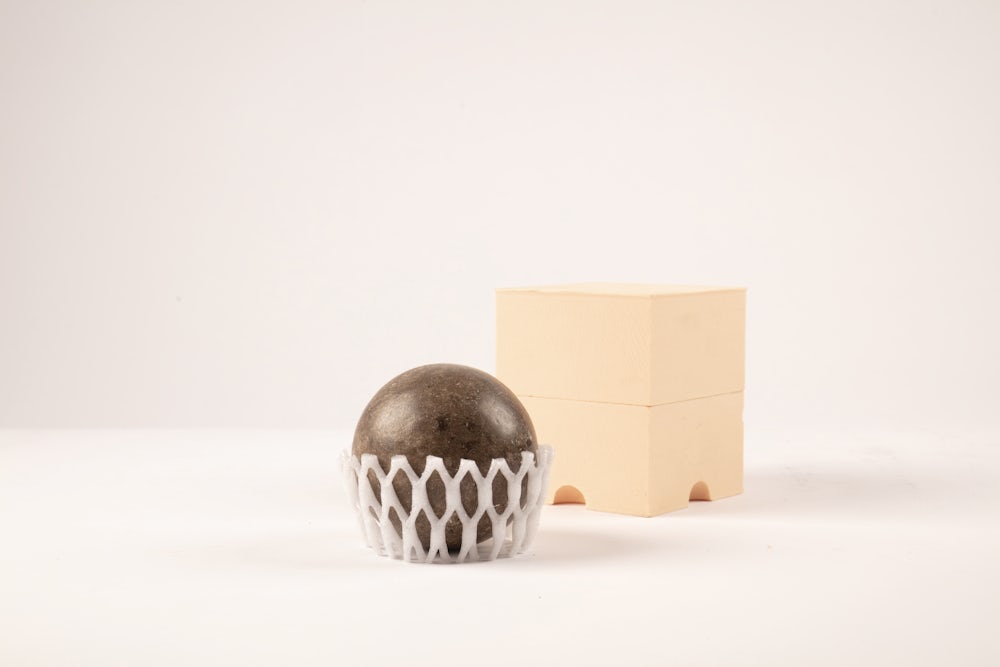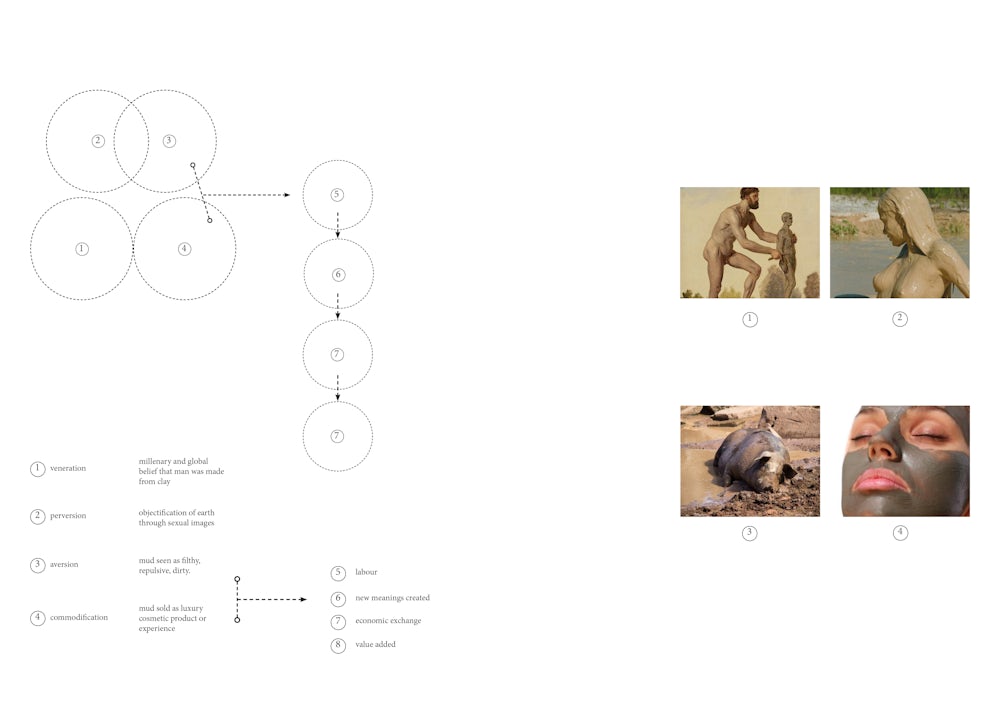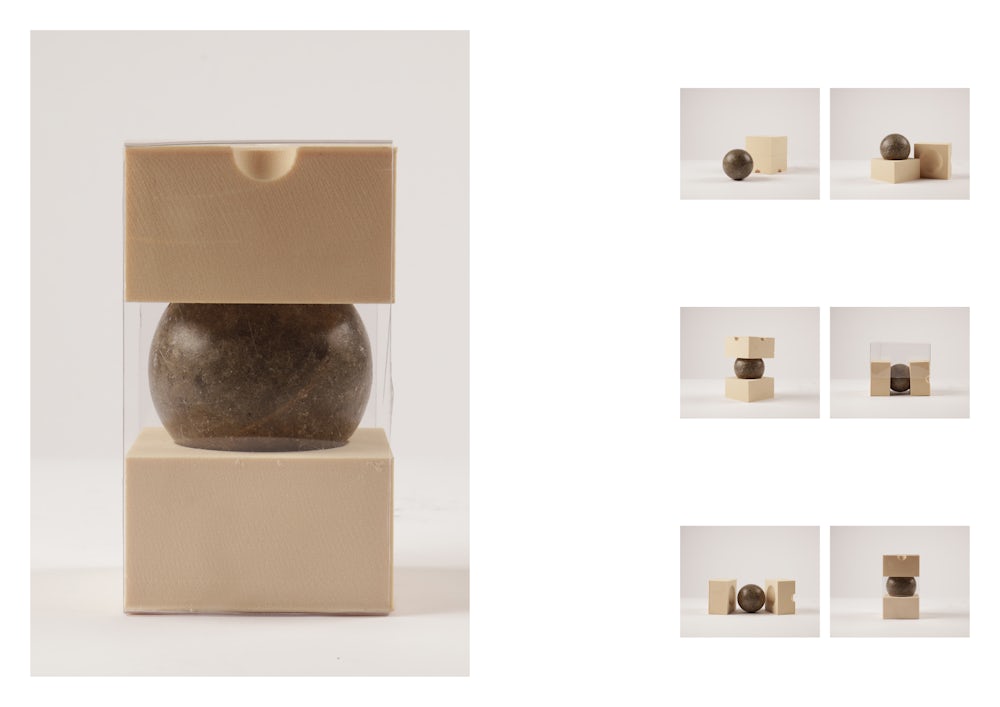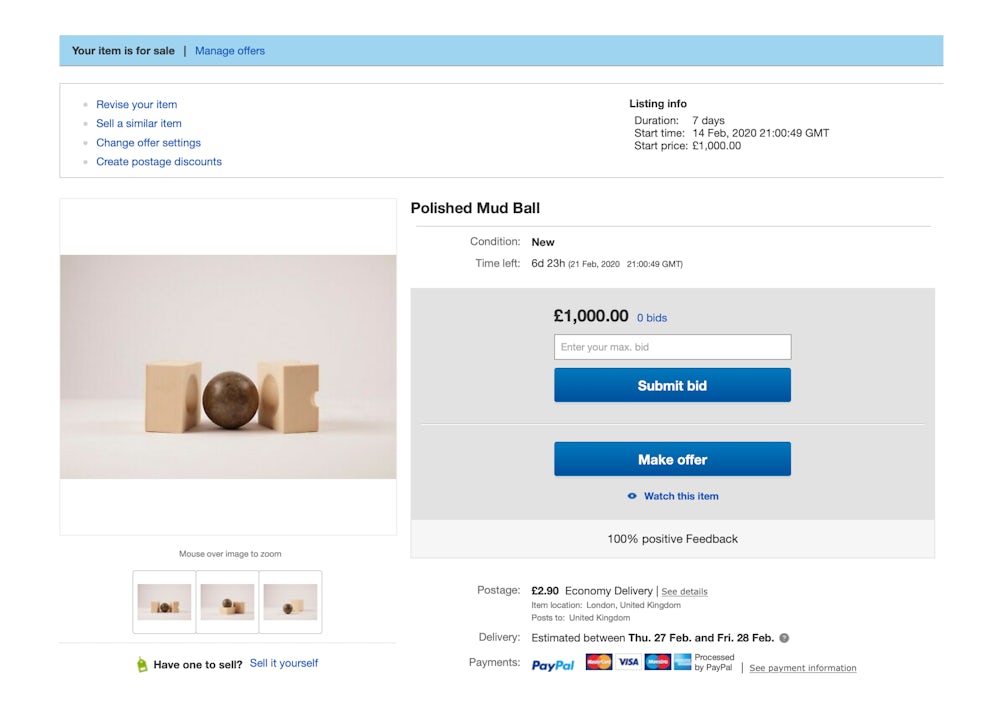Amber Godfrey
"Dirt on Loan"
Section MS8, Tania Lopez Winkler
Keywords: materials, photography, objects, environment
Dirt on Loan explores ideas around material culture, regimes of value, and commodification. These themes emerged through the cataloguing of the various associations to mud. The same ‘mud’ in different visual contexts present the ‘material’ as having many unexpected and often contradictory meanings.
Mud is not [inherently]:
- Unclean, however it is used to mediate ideas of uncleanliness.
- Sexual, however it is used to mediate ideas of sexuality.
- Poor, however it is used to mediate ideas of poverty.
- Holy, however it is used to mediate religious ideas.
- Luxurious, yet it is packaged and sold as a luxurious cosmetic product.
Both the aversion and perversion, the denigration and veneration of mud exist parallel to one another, unaffected. Additionally, we see that when there are agreements concerning what is desirable; mud (with the appropriate packaging and marketing) can also be commodified. This shows that associations can be paradoxical and flexible to change.
The perceived hierarchy of material in the industrialised world has for decades been connected to the perception that soil is inferior or unclean, reflected in our current mode of consumption and production:
Soil represents the largest form of waste in Western society. In 2016 in the UK, soil ‘waste’ - mostly from construction- doubled municipal waste. Yet, soil is both finite and essentially non-renewable, as it takes over 500 years to make 2cm of topsoil. In our increasingly urban environments, it becomes more and more sparse, less and less democratic. With the continuation of immense development and subsequently the disposal of vast amounts of soil, perhaps it will become a truly become a rare commodity.
Dirt on Loan aims to challenge this hierarchy through creating a new meaning. The polished surface quality of the soil is unexpected, contradicting the texture that we normally associate with earth. The protective synthetic packaging illustrates its commodification, suggesting the value of the object, while also creating a different hierarchy of materials.
Synthetic materials are often used to separate us from the earth and its natural consequences, from rubber soles to concrete floors. Even in death, decay and unity is resisted through lacquered coffins. However, this object shifts the dialogue - presenting the soil as the protected rather than resisted.
Key to the process of commodification is exchange; “Economic exchange creates value. Value is embodied in commodities that are exchanged.” I hope to comment on the ideas of the human ability to commercialise essentially anything; even something free. This will be done by attempting to sell this product on Ebay.

